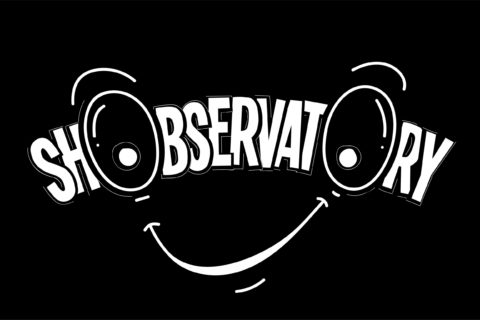Can online qual deliver robust outcomes for projects that are more complex, strategic, even creative?
Digital seems to work well for straightforward qual briefs, as we outlined in the first article of this mini-series – but what about NPD briefs involving co-creation, or concept labs for example? Can participants be as creative online as in a face-to-face setting?
Our experience over the past 8 weeks – again positive, when you know how.
The tools are there – there’s a range of collaborative software options available. The onus is on us to get up to speed with a new “language”, online commands, functionalities… 😉 and of course tune our very own moderation style that gets participants’ creative juices flowing digitally, facilitating so we are able to merge digital empathy with energy.
It can be a bit humbling. Many of us have sung the praises of face-to-face as the gold standard in qual for years, especially for more creative briefs, emphasizing how useful it is for people to involve themselves physically, not just mentally. So, it’s all the more uplifting when we see how well digital works.
The same digital challenges we mentioned in part 1 exist: managing attention spans, being careful with group size, anticipating background disturbances, preparing differently and more.
This article focuses on the more specific challenges of advanced qual online briefs, illustrating with current or recent projects – concept labs and co-creation sessions.
Concept Labs – Online
Concept Labs are a tried-and-tested way of translating rough ideas into fine-tuned concepts. They work iteratively, involving creative groups and concept development sessions between agency and client. Rather than consumers simply re-writing concepts, the qual researchers help client teams to understand what consumer reactions really mean – and use these interpretations to build engaging concepts. The process invariably results in better scores at the validation stage.
Whilst the quant phase has long been done online, the qual part was always face-to-face– until the coronavirus pandemic took that option away. Our experience with more than a handful of digital concept labs has been positive – they work just as well in terms of outputs. The preparation and interaction are different, but in some ways online has definite advantages.
Geographic spread is better – within country and of course internationally. Clients can join in much more easily, travel costs are eliminated, the eco-footprint is better.
In one recent global project, the client workshop was conducted with participants in France and the moderator in Germany. The subsequent consumer sessions were conducted on the same day in the UK and USA. In the US groups, we were able to mix participants from NYC, Chicago and LA in one group.
The technical set-up is critical – including a proper participant introduction to the relevant software tools such as the voting mechanism, how a digital whiteboard works etc. Having IT support at hand is more than useful – there is nothing worse than tech glitches or screen blackouts.
Time and space do work differently online – one of our learnings from part 1. Digital workshops with clients need to be shorter, to the point. Focus groups shouldn’t overrun the 90 minutes time limit, and we’d suggest that more than 6 people in an online group doesn’t allow for a good flow or group interaction.
Pre-tasks are useful (if the process allows) – both for clients and participants. The role of analogue is actually heightened here if the fieldwork is digital – having participants print-out concepts that have been sent to them prior to fieldwork commencing for example can be useful for some projects. These can be spread out at home, are easier to read and of course make notes on – as opposed to juggling with multiple ideas or concepts on screen all at the same time (for comparative purposes) which can lead to things being overlooked, mis-read or at worst misleading results.
Our take-out: Concept labs work well online. More than that, they actually gain in flexibility and agility – it’s far easier to work across audiences and geographies faster and at a lower cost.
Co-Creation – online? Really? Really!!
Involving more creative participants into innovation processes has worked well for F2F qualitative research for many years – the tacit assumption being that online didn’t work so well for these types of tasks. Coronavirus has forced us to revisit this.
Very recent projects have shown us that co-creation can actually work well digitally – switching online allows facilitators to employ many of the same methods and tools; the principles behind generating successful outputs are very similar if not identical.
On the software side, a digital co-creation session can use break-out sessions, visualizing options via whiteboards, digital voting, ice-breakers and more. From a moderation POV, the same principles apply – including working in smaller groups, setting time-boxed creative tasks, asking people to pick up a pen and paper to write things down. The preparation is indeed different – the technical set-up needs to be planned carefully, and as we will see timings needs to be adjusted to avoid mental fatigue.
But before we go into our experience, a few words on the digital whiteboard – which seems to be a central player for more co-creative qual tasks.
Digital Whiteboards – Hallo!!
Research is likely playing catch-up on the whiteboard front: if you’re a teacher you probably know more about them than the average qualitative researcher. If you haven’t used one before – and hands up, virtually none of us had prior to the coronavirus-induced learning curve of the last 3 months – these simple digital sheets are extremely versatile and immensely useful.
They can be pretty much what you want them to be – pre-formatted worksheets of all sizes with a range of different tasks and questions, for example, coming with a huge range of colours, symbols and lettering types. They work well for collages or brand mapping exercises, both individually and then shared with a broader group. Coloured digital markers can be tacked onto boards – for idea evaluation. Reveals are possible – the facilitator can open up the “group score” to spur a discussion.
Professional visualisers or illustrators – often involved in offline co-creation sessions – can also help to bring ideas to life and to share their illustrations directly on the whiteboard.
The initial input from participants’ scribbles is of course revealing as well – it tells us what emphasis participants place on the various elements of name, descriptor, ingredients by how prominently or large/small they are shown. A sort of implicit packaging hierarchy – interesting if break-out groups have been pre-defined to belong to a certain cluster of consumer types.
Digital Co-Creation: Online, Agile and Upwards!
The iterative aspect of all this is arguably even easier than offline – and it’s impressively agile.
In one recent project a client wanted to understand which features of a new app best fitted likely user needs in a South East Asian market and Germany– get a steer on which benefits would be most relevant and motivating – as well as generating basic insights into needs and wants. Face to face was not an option due to the coronavirus situation.
Our design involved a series of daily mobile ethnographic tasks – participants were asked to record and describe their experiences and usage situations over the period of a week. Each day focused on a different aspect of the app, a feature was highlighted, with participants registering their feedback on UX and experiential aspects. Each evening the same participants were invited to online groups, pre-sorted into smaller groups according to segment definition, so that they could discuss each other’s experience.
By breaking down the tasks into bite-size pieces we were able to re-create digitally what we would likely have conducted offline in half day creative sessions in a process we call Panorama Groups. At the end of the fieldwork, it was clear to the client which functionalities had the highest relevance, and why – plus a robust understanding of how the app’s offerings best fitted experiential expectations, and how it added something different and new to existing offerings.
Wrap-Up – analogue, digital…”digilogue”?!
Now that lockdown restrictions are being lifted slowly in many countries, and retro-fitted viewing facilities permit F2F focus groups once again, it’s timely to reflect – which of the new digital qual skills that we’ve learned over the past 3 months will prove sustainable, and which will disappear as F2F re-emerges?
We’ve learned a lot about digital, it can do a lot more than we thought possible – empathy and depth are accessible using online qual tools, screen-to-screen works well. There’s a broad range of enabling software tools – for many of us an eye-opener, effectively avenues to more advanced briefs, strategic multi-country challenges.
The digital whiteboard? We love it.
So, if asked: What will the new qual normal look like? We’d say: with digital and analogue approaches given a good fusion-style shake, and with practitioners invigorated by all the new tech tools we’ve got to know…maybe something more powerful emerges. The mix is exciting, it potentially allows qual to stretch its tentacles even further in an eco-optimised, cost-sensitive manner.
Why not combine having participants present physically (and locally) with “virtual” sessions from folk around the world – “glocal” qual so to speak? Accompany people in France on their shopping trips to an out-of-town hypermarket – and join Japanese shoppers screen-to-screen via Facetime or Zoom as they browse the aisles at their local food store?
Equally, if a digital concept lab offers more advantages than its F2F counterpart – possibly even more cost-effectively – why artificially force-fit into a F2F retro-fit?
Habits of course die hard. But learning is an imperative – especially when it’s digital, potentially transformative and existentially compelling. We’ll continue to tinker around, looking for the sweetest mix of digital and analogue, giving substance and further case studies to the world of “digilogue”.
Watch this space 😉
This article was first published in German at the online portal marktforschung.de



1 comment
I’m a foresights and strategy professional who had recently been laid off. To keep myself going I’m running online creative writing classes for kids between 10-14. I get loads done on Zoom and WhatsApp. Co-creation – check. The chat window allows them to build in each other’s ideas. Collaboration in small groups – check. They challenge and rate each other’s ideas (I didn’t even have to ask them – a 9 year old began rating stories on how much fun he had listening to them). Pre-work – check. When I give them a task, they always complete it ahead of time and have their parents WhatsApp it to me. Enthusiasm – check. I asked them to think of characters and create a comic strip – showed them a grid; they found sites online which allowed them to choose characters and backgrounds and then fill in speech bubbles. What more can a researcher ask for? Hit me up for projects, will you?